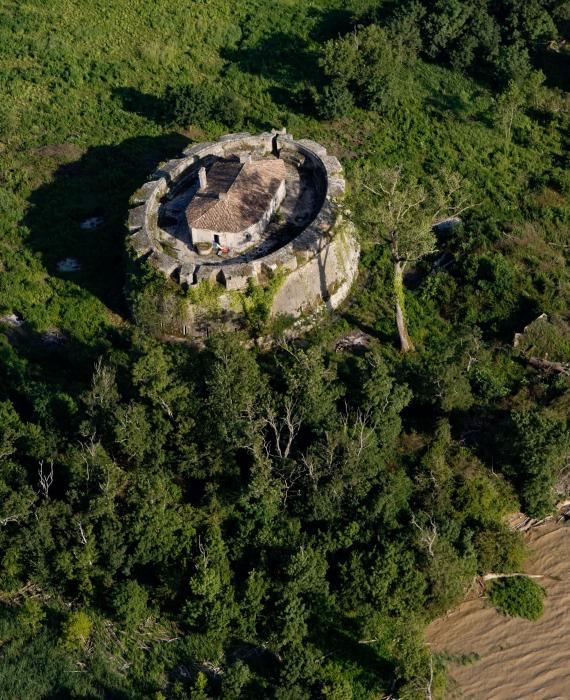Journées européennes du patrimoine
Les 20 & 21 septembre 2025, les douze Fortifications de Vauban inscrites sur la Liste du patrimoine mondial de l'UNESCO vous proposent de nombreux évènements. Découvrez-les vite !

The barricade of the estuary is an imposing triptych guarding the River Gironde and was built by Vauban and his engineer, Ferry, between 1685 and 1692.

At Blaye, Vauban planned a new town wall with four bastions, three demi-lunes and two gates. He thereby transformed the medieval wall, systematically adapting the existing structures but leaving no visible outer signs of his work.
From the other side of the bank, the engineer had a square fort, Fort Médoc, built from scratch on marshy land, meaning that he could only build barriers of earth for defence.
Finally, Vauban erected Fort Pâté on an unstable sandbank in the middle of the river to close off the estuary. This oval canon tower was a remarkable technical feat and the prototype of a compact sea fort. It enabled cross fire with both banks, located 1600 metres from the island.
These three monuments, built on distinctly different sites, are complementary and today share a common cultural and tourism project.
Les 20 & 21 septembre 2025, les douze Fortifications de Vauban inscrites sur la Liste du patrimoine mondial de l'UNESCO vous proposent de nombreux évènements. Découvrez-les vite !
On July 7th 2023, 15 years to the day after the Fortifications of Vauban were inscribed on UNESCO's World Heritage List, the twelve major Vauban sites proudly celebrated this anniversary in ceremonies...
The year 2023 marks the 15th anniversary of the inscription of Vauban's Fortifications on the UNESCO World Heritage List. This is an opportunity to celebrate World Heritage and Vauban's work of genius...
Mairie de Blaye
7, cours Vauban - BP 125
33 394 Blaye cedex
Phone number: 05 57 42 68 68
www.blaye.fr
Mairie de Cussac-Fort-Médoc
11 Place du Général de Gaulle
33 460 Cussac-Fort-Médoc
Phone number: 05 57 88 85 00
www.cussac-fort-medoc.fr
Office de tourisme de Blaye
1 place de la citadelle
33 390 Blaye
Phone number: 03 05 57 42 12 09
www.bbte.fr
Visite du Fort Médoc
32 Avenue du Fort-Médoc
33460 Cussac-Fort-Médoc
Phone number: 05 56 58 98 40 / 06 86 59 07 75
Mail : fort.medoc@cussacfortmedoc.fr
The citadel of Blaye is open all year round. Guided tours.
Fort Médoc is open from 1 February to 30 November, admission fee payable. Guided tours.
Fort Pâté cannot be visited.